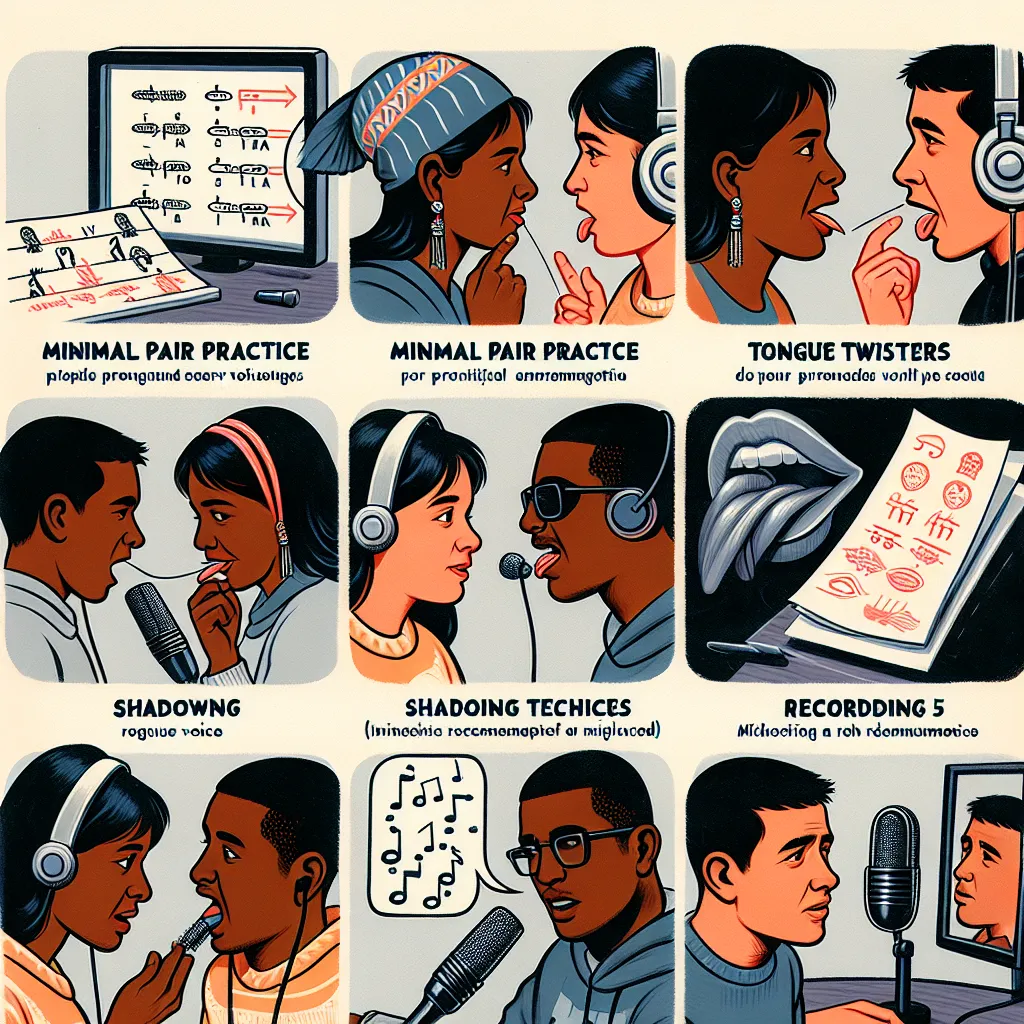Are you looking to improve your English pronunciation? Whether you’re a beginner or an advanced learner, mastering pronunciation is crucial for effective communication in English. In this comprehensive guide, we’ll explore the Best Exercises For English Pronunciation, providing you with practical tips and techniques to enhance your speaking skills.
Understanding the Importance of English Pronunciation
Proper pronunciation is the foundation of clear and confident English communication. It not only helps you be understood but also boosts your overall language proficiency. Let’s delve into why focusing on pronunciation is essential and how it can benefit your English learning journey.
Why Pronunciation Matters
- Clarity: Good pronunciation ensures that your message is conveyed clearly, reducing misunderstandings.
- Confidence: When you pronounce words correctly, you feel more confident in speaking English.
- Listening Skills: Improving your pronunciation enhances your ability to understand native speakers.
- Professional Growth: Clear pronunciation can be advantageous in job interviews and workplace communication.
 Importance of English Pronunciation
Importance of English Pronunciation
Essential Pronunciation Concepts
Before diving into exercises, it’s crucial to understand some fundamental concepts in English pronunciation.
Phonemes and Sounds
English has 44 distinct sounds, including vowels and consonants. Familiarizing yourself with these sounds is the first step to improving your pronunciation.
Stress and Intonation
Word stress and sentence intonation play a significant role in English pronunciation. They affect the meaning and emotion of what you’re saying.
Connected Speech
In natural English speech, words often blend together. Understanding phenomena like linking, elision, and assimilation can greatly improve your fluency.
Best Exercises for English Pronunciation
Now, let’s explore some of the most effective exercises to enhance your English pronunciation skills.
1. Minimal Pair Practice
Minimal pairs are words that differ by only one sound. Practicing these can help you distinguish and produce similar sounds accurately.
Example Exercise:
- Practice saying: “ship” vs. “sheep”, “bet” vs. “bat”, “full” vs. “fool”
2. Tongue Twisters
Tongue twisters are excellent for improving articulation and speed.
Example Exercise:
- “She sells seashells by the seashore.”
- “Peter Piper picked a peck of pickled peppers.”
3. Mirror Practice
Using a mirror while speaking allows you to observe your mouth movements and make necessary adjustments.
Example Exercise:
- Practice saying words with challenging sounds like “th” (think, this) or “r” (red, around) while watching your mouth in the mirror.
4. Shadowing Native Speakers
Listen to native English speakers and try to mimic their pronunciation, intonation, and rhythm.
Example Exercise:
- Choose a short audio clip from a podcast or YouTube video. Listen carefully, then try to repeat exactly what you hear, matching the speaker’s pace and intonation.
5. Recording and Self-Analysis
Record yourself speaking English and listen back to identify areas for improvement.
Example Exercise:
- Read a paragraph aloud and record it. Listen to your recording and note any pronunciation issues. Then, practice those specific areas and record again to track your progress.
 Best Exercises for English Pronunciation
Best Exercises for English Pronunciation
6. IPA (International Phonetic Alphabet) Study
Learning the IPA can help you understand the exact sounds of English words, especially when using a dictionary.
Example Exercise:
- Look up the IPA transcription of words you find challenging and practice pronouncing them based on the phonetic symbols.
For more in-depth strategies on improving your English fluency, including pronunciation tips for presentations, check out our article on tips for improving English fluency in presentations.
Common Pronunciation Mistakes and How to Avoid Them
Being aware of common mistakes can help you focus on areas that need improvement.
1. Th-Sound Confusion
Many learners struggle with the “th” sound, often substituting it with “s”, “t”, or “f”.
Solution: Practice placing your tongue between your teeth for words like “think”, “this”, and “three”.
2. Silent Letters
English has many words with silent letters that can be tricky for learners.
Solution: Create a list of words with silent letters (e.g., “knife”, “listen”, “psychology”) and practice them regularly.
3. Word Stress Errors
Incorrect word stress can change the meaning of a word or make it difficult to understand.
Solution: Use a dictionary to check the stress pattern of new words you learn. Many online dictionaries provide audio pronunciations as well.
4. Vowel Sound Confusion
English has many vowel sounds that don’t exist in other languages.
Solution: Focus on minimal pairs that highlight vowel differences, such as “ship/sheep”, “full/fool”, “cat/cut”.
5. Intonation Issues
Flat or incorrect intonation can make your speech sound unnatural.
Solution: Practice question intonation and emphasis in sentences. Listen to native speakers and try to mimic their speech patterns.
To further enhance your English learning experience, consider exploring effective ways to use language learning apps. Our article on tips for using English learning apps effectively offers valuable insights.
Phonemic Chart and Commonly Mispronounced Words
Phonemic Chart
The phonemic chart is a valuable tool for visualizing English sounds. Familiarize yourself with this chart to improve your pronunciation accuracy.
10 Commonly Mispronounced Words
- Clothes (/kloʊðz/ not /kloʊz/)
- Espresso (/eˈspresəʊ/ not /ekˈspresəʊ/)
- February (/ˈfebjueri/ or /ˈfebrueri/, not /ˈfebueri/)
- Pronunciation (/prəˌnʌnsiˈeɪʃən/ not /prəˌnaʊnsiˈeɪʃən/)
- Salmon (/ˈsæmən/ not /ˈsælmən/)
- Colonel (/ˈkɜːrnl/ not /kəˈləʊnəl/)
- Jewelry (/ˈdʒuːəlri/ not /ˈdʒuːləri/)
- Mischievous (/ˈmɪstʃɪvəs/ not /mɪsˈtʃiːviəs/)
- Height (/haɪt/ not /haɪθ/)
- Comfortable (/ˈkʌmftəbl/ or /ˈkʌmfərtəbl/, not /ˈkʌmfətəbl/)
Practice these words regularly to avoid common pronunciation pitfalls.
For a deeper dive into English language immersion techniques, which can significantly boost your pronunciation skills, explore our article on how to master English pronunciation through immersion.
Conclusion
Improving your English pronunciation is a journey that requires consistent practice and patience. By incorporating these exercises into your daily routine, you can make significant progress in your speaking skills. Remember, the key to success is regular practice and not being afraid to make mistakes.
We encourage you to try these exercises and share your experiences in the comments below. What pronunciation challenges have you faced, and which techniques have worked best for you? Keep practicing, and you’ll soon notice a remarkable improvement in your English pronunciation!
For more English learning tips and resources, explore our other articles, such as how to practice English grammar with flashcards and tips for mastering English through reflective exercises.




